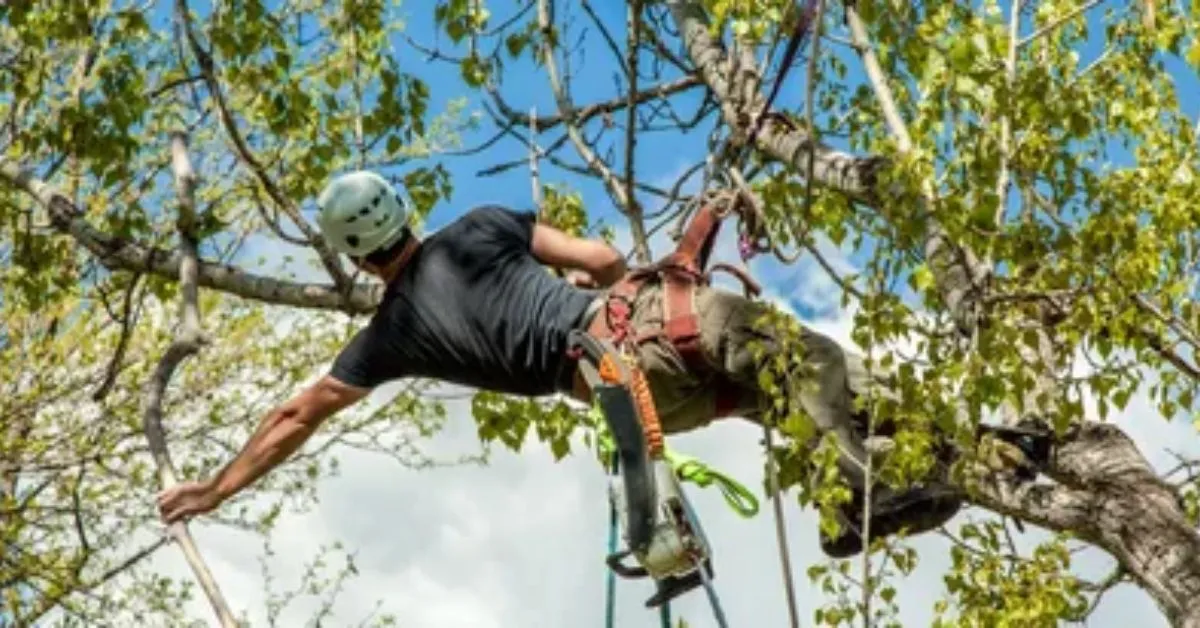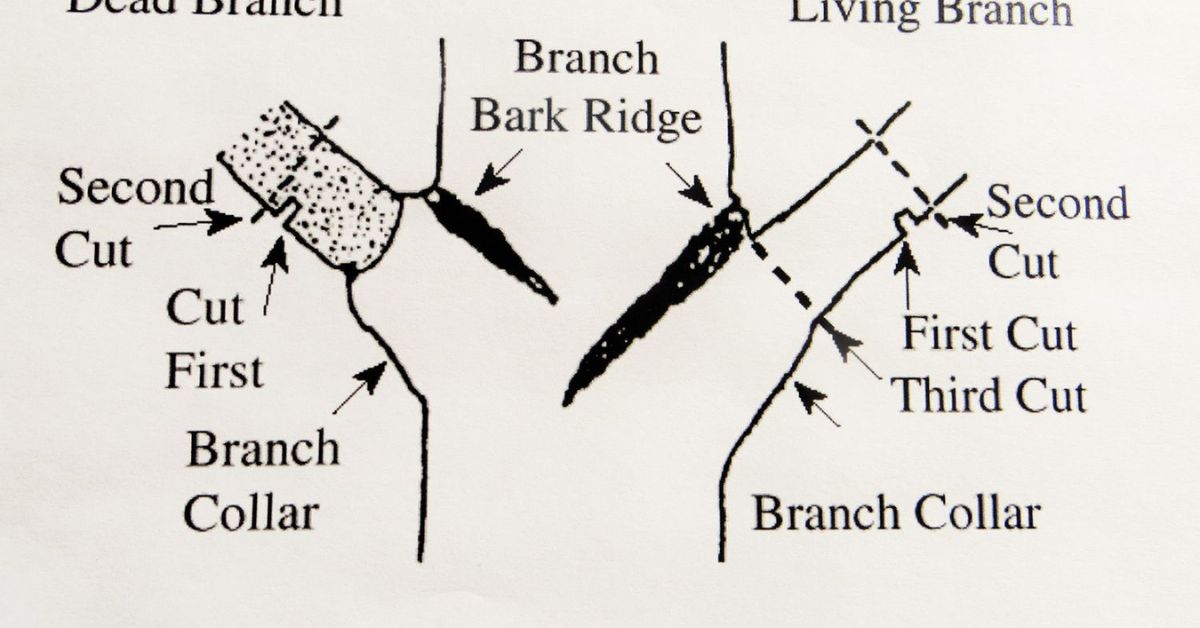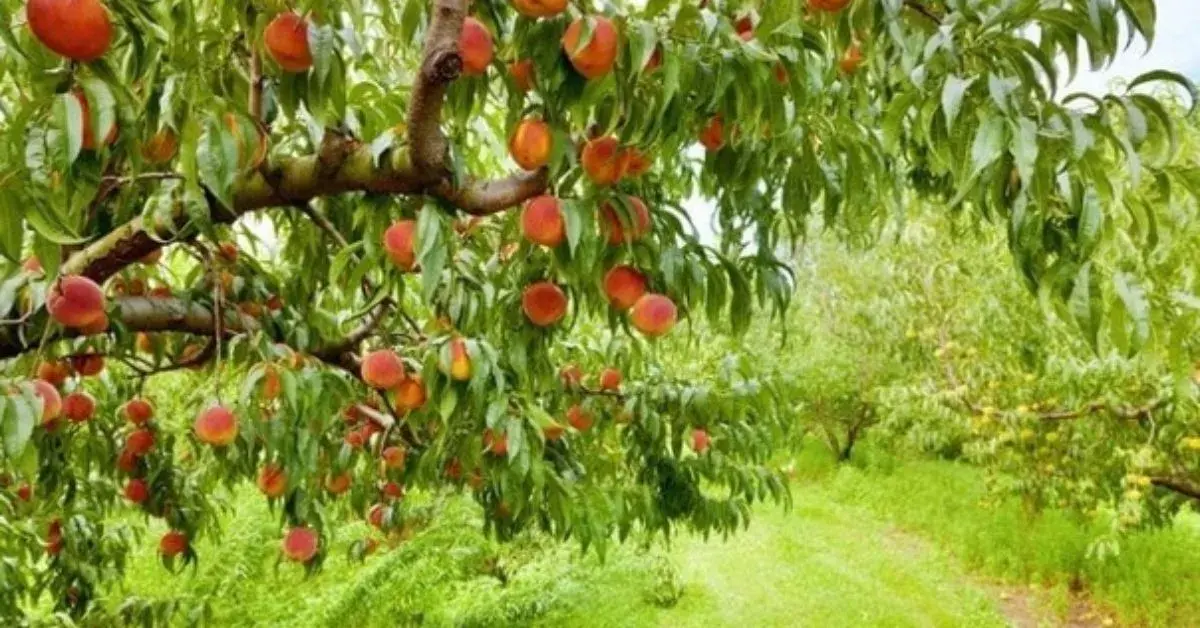Weeping peach trees with bring a very beautiful cascading elegance to the garden with their drooping branches and brilliant spring flowers. However, there is one problem; most gardeners have no idea what proper pruning techniques are for these ornamental beauties. As weeping varieties are different from their standard cousins, a particular approach is needed to keep their distinctive form and produce healthy fruit.
Pruning weeping peach trees for aesthetic and horticultural needs is an art that balances beauty with function. Having little or no pruning results in a tangled mass of unproductive branches while overzealous pruning can damage the tree and its characteristic weeping habit. The goal is to find this sweet spot, but it’s not just about using the right tools. It’s about knowing how the tree grows and pruning it deliberately.
In this guide, we will break down essential pruning techniques that keep your weeping peach’s graceful silhouette while also promoting robust health and abundant flowering. No matter how experienced you are, these straightforward methods will help your weeping peach thrive for years to come.
In this guide, we will break down essential pruning techniques that keep your weeping peach’s graceful silhouette while also promoting robust health and abundant flowering. No matter how experienced you are, these straightforward methods will help your weeping peach thrive for years to come.
Understanding Weeping Peach Trees
Peach trees weeping add their cascading branches and lovely pink blooms to gardens. Standard peach trees grow differently, with weeping branches that droop toward the ground naturally. Weeping ornamental trees are typically 10-15 feet tall, but they spread wider through their graceful, arching limbs.
Many varieties like ‘Pink Cascade’ and ‘Ruby Falls’ offer stunning spring displays. Their care needs differ slightly from regular peach trees. They prefer full sun and well-draining soil to thrive. Weeping peaches can grow in zones 5-9 and make perfect focal points in landscape designs.
Why Pruning is Essential

Having weeping peach trees well trimmed is important in order to keep the trees in good condition and prevent disease by cutting away any dead or diseased wood. It also helps to stop branches from growing down to the ground and possibly rooting or developing fungal diseases. This also helps in increasing the internal porosity of the canopy and thus prevents the incidence of some typical diseases of peach trees including those mentioned above.
If unpruned, weeping peaches are crowd-stunted and fail to produce many flowers or fruit. Growth is encouraged where blossoms appear by pruning. It also strengthens the tree and makes it less likely to suffer wind damage or be overwhelmed by heavy snow.
Best Time to Prune
Late winter marks the ideal pruning time for weeping peach trees, just before new growth begins. February to early March works best in most regions, when the tree remains dormant but spring isn’t far off. This timing helps wounds heal quickly as the growing season starts.
Avoid pruning during fall or early winter when cuts heal slowly. Summer pruning should focus only on removing damaged branches. Light trimming after flowering can shape the tree without affecting next year’s blooms. Never prune during wet weather, which can spread diseases through fresh cuts.
Essential Tools for Pruning
- Bypass pruners are ideal for clean cuts on smaller branches up to ½ inch thick.
- Loppers extend your reach and handle branches up to 1½ inches in diameter.
- A pruning saw tackles larger branches that pruners and loppers can’t manage.
- Sharp tools make cleaner cuts that heal faster and reduce disease risk.
- Disinfectant (70% alcohol or 10% bleach solution) prevents spreading disease between cuts.
- Garden gloves protect your hands from thorns and scratches.
- A sturdy ladder provides safe access to higher branches.
- Pruning sealer is optional but may help protect larger wounds.
- Safety glasses shield your eyes from falling debris and twigs.
- Tool sharpeners help maintain your equipment between pruning sessions.
Step-by-Step Guide to Pruning
- Begin by removing any dead, damaged, or diseased branches.
- Cut out any branches that cross or rub against each other.
- Prune back branches that touch the ground to prevent disease.
- Thin out crowded areas to improve air circulation throughout the tree.
- Make cuts ¼ inch above an outward-facing bud to direct new growth.
- Remove any upright shoots that disrupt the weeping form.
- Cut back overly long branches to maintain the desired shape and size.
- Prune branches at a 45-degree angle to help water run off the cut surface.
- Step back frequently to assess your progress and overall tree shape.
- Limit removal to no more than 25% of the tree’s canopy in a single year.
- Clean and disinfect tools between cuts on diseased branches.
- Collect and dispose of all pruned material to prevent disease spread.
Techniques for Proper Pruning

Always make clean cuts at a 45-degree angle when pruning weeping peach trees. Cut just above outward-facing buds to direct new growth away from the center. Remove water sprouts and suckers that grow straight up, as they disrupt the weeping form. Thin crowded areas by removing the weakest branches first. Step back often to check your overall progress and maintain balance.
Never leave stubs when pruning as they invite disease and pests. Use the three-cut method for larger branches to prevent bark tearing. First, cut partway through the branch from underneath. Make your second cut from above, slightly farther out. Finally, remove the remaining stub with a clean cut just outside the branch collar. Disinfect your tools between cuts if you spot any signs of disease.
Rejuvenation Pruning for Older Trees
Older weeping peach trees sometimes need more dramatic pruning to restore health and beauty. Start by removing all dead, diseased, and damaged wood completely. Cut back severely overgrown branches by up to one-third their length. Remove any branches growing toward the center that create dense shade. This heavy pruning stimulates fresh growth and revitalizes tired trees.
Spread rejuvenation pruning over two to three years for severely neglected trees. Focus on the worst areas first year, then continue with less critical sections later. Fertilize after rejuvenation pruning to support new growth. Water thoroughly during dry periods as the tree recovers. Be patient—it may take a season or two for your weeping peach to regain its graceful form, but proper rejuvenation adds years to your tree’s lifespan.
Common Mistakes to Avoid
- Cutting too many branches at once, shocking weeping peach trees and reducing their vigor
- Pruning at the wrong time of year, which can make weeping peach trees susceptible to disease
- Removing too many interior branches, creating an unbalanced “hollow” appearance
- Failing to sterilize pruning tools between cuts, potentially spreading infections
- Cutting flush against the trunk instead of preserving the branch collar
- Over-pruning young trees before they’ve established their characteristic weeping form
- Neglecting to remove crossing or rubbing branches that damage bark
- Leaving stub cuts that won’t heal properly and invite pests
- Pruning during wet weather when fungal spores spread more easily
- Ignoring the natural growth pattern of the specific weeping peach variety
Post-Pruning Care
- Apply pruning sealer to larger cuts on weeping peach trees to prevent disease entry
- Water thoroughly after pruning to reduce stress and promote healing
- Mulch around the base, keeping it away from the trunk, to retain moisture for weeping peach trees
- Monitor for signs of pest activity around fresh cuts, which are particularly vulnerable
- Avoid fertilizing immediately after pruning to prevent excessive new growth
- Inspect the tree regularly for any signs of disease or stress in the weeks following pruning
- Remove any water sprouts or suckers that emerge after pruning
- Provide extra protection from extreme weather conditions while the tree recovers
- Consider a light fungicide application if pruning during humid seasons
- Take photos to document the tree’s appearance for comparison in future pruning sessions
Frequently Asked Question
When is the best time to prune a weeping peach tree?
Late winter or early spring before bud break is ideal, typically February to early March in most regions.
How much should I prune off my weeping peach tree each year?
Remove no more than 20-25% of the canopy in a single pruning session to avoid stressing the tree.
Can I save a weeping peach tree that’s been severely neglected?
Yes, but restoration requires gradual pruning over 2-3 years rather than aggressive correction in one session.
Do weeping peach trees need different care than standard peach trees?
Yes, they require specialized pruning to maintain their weeping form while still encouraging proper structure and airflow.
How do I know if my weeping peach tree needs emergency pruning?
Broken branches, signs of disease spread, or pest infestations may require immediate attention regardless of season.
Conclusion
Learning how to prune weeping peach trees can be a time consuming process, but when done correctly it can produce a beautiful ornamental tree that has not only healthy growth but also a graceful form. These trees are also distinguished by a cascading shape that is very attractive so whatever cut is made, whether it is to get rid of a diseased branch, increase airflow or just enhance the overall shape of the tree.
But seasonal maintenance is about more than just pruning. When you include pest and disease prevention, and post pruning care in your gardening schedule, you are preparing for potential issues that could harm your tree’s health if left untreated. Maintaining a routine that includes these practices produces healthier trees that flower more frequently and may even provide higher fruit yields when the plant is a peach variety that produces edible fruit.
If you take the time to give your weeping peach the attention it needs, it can be the stunning centerpiece of your landscape for many years. You will have a resilient tree that displays the best of nature’s artistry in every season if you invest the proper pruning effort. As with many aspects of gardening, you will find that the more you work with your weeping peach tree, the more you come to appreciate the relationship you have with it as you provide it with careful yearly maintenance.




